Work estimates are a vital part of the sales process for construction, repairs, automotive, and various other industries. Unfortunately, putting together new work estimates for every new client is a time-consuming process, to the point where it can feel like half a day is spent on creating quotes.
Using an editable, customizable work estimate template reduces setup time and allows easy quote creation. In this article, learn why work estimate forms are so important and become more familiar with different formats as well as a unique template on monday.com.
What is a work estimate template?
For companies and contractors that don’t sell a product or operate on a fixed pricing model (i.e., the majority of tradespeople), work estimates are a crucial part of the sales process. Instead of a fixed price, the company provides a formal estimate for the cost of a given piece of work.
For example, a plumber might provide a work estimate to a potential customer on the cost of repairing a broken valve.
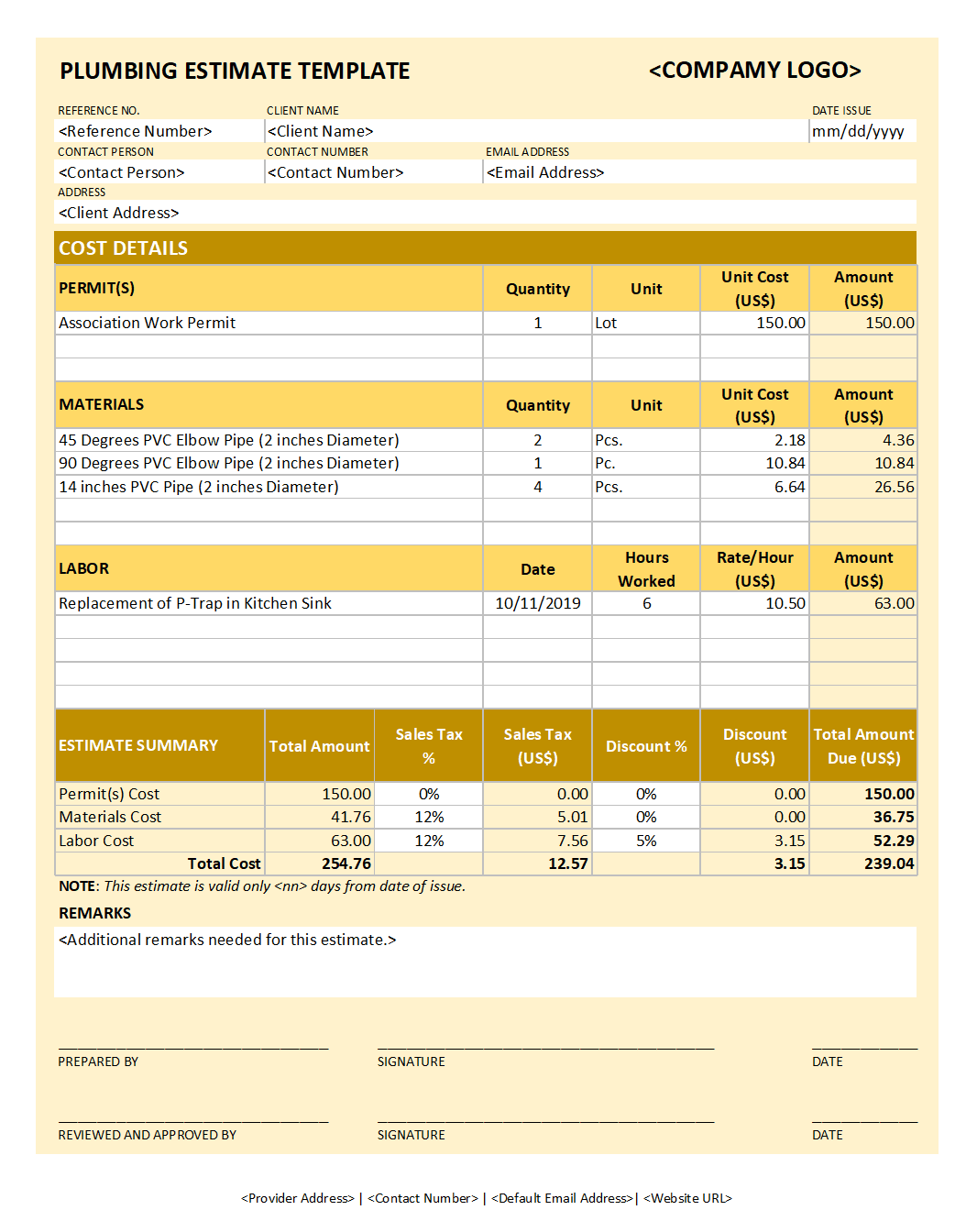
Work estimates — also known as quotes or job or cost estimates — include detailed information, not just the estimated cost of the work. Work estimates also include:
- The company name and address
- A quote or estimate
- The date you created the work estimate
- The customer’s contact details (i.e., address and phone number)
- A breakdown of the work required, as well as any parts needed
That’s a lot!
Many contractors prefer to use a job (or work) estimate template, a customizable solution that includes all necessary details, some pre-filled, others editable.
Simply pull up the work estimate template, save a new copy (keeping the original template intact) and immediately plug in the required details and get that quote or invoice sent.
Why use a work estimate template?
The main reason companies and contractors use quote templates is speed. Even solo contractors likely send out dozens of work estimates each month. Creating a new quote entirely from scratch each time is a time-waster.Item prices, copying and pasting company information, and adding various tables and formatting could take each team member hours. And they could better spend that time on completing actual work!
Using a work estimate template, “pre-work” is already done. The job cost details are there, and many other items are already filled out. Pre-defined fields for customer details mean you only need to fill in some data. Plus, the company info and logo are right at the top.
Work estimate templates are also customizable and adjustable to reflect learnings as a business evolves. For example, after a few months of using a work estimate template, it’s determined that including payment terms upfront is essential.
That’s not all, though.
Work estimate templates instill a sense of professionalism in your customer communications, mainly when you send repeat clients multiple estimates, as each price quote template will look alike. They’re also a helpful way of reducing human error, as certain elements — such as formulas designed to calculate the estimated total automatically — are already set up.
What are some examples of work estimate templates?
Let’s take a look at some different templates for different industries.
Work estimate template for construction
This estimate template is an excellent example of what construction contractors would include. Note: This template includes space for both company and customer details and a quote expiration date. Work estimates don’t have to have expiration dates, but they can help add urgency to the sales process.
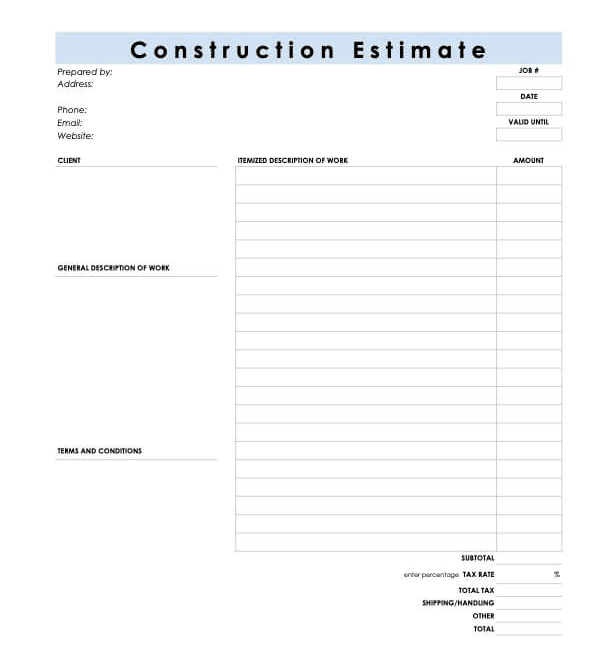
The main table has space for a detailed description of each item. And that’s crucial for construction jobs since you should list labor costs, supplies, and consumables as separate line items. So are any terms and conditions applicable for a specific job.
Work estimate template for vehicle repairs
This work estimate template is a simple example of a quote for automotive repairs.
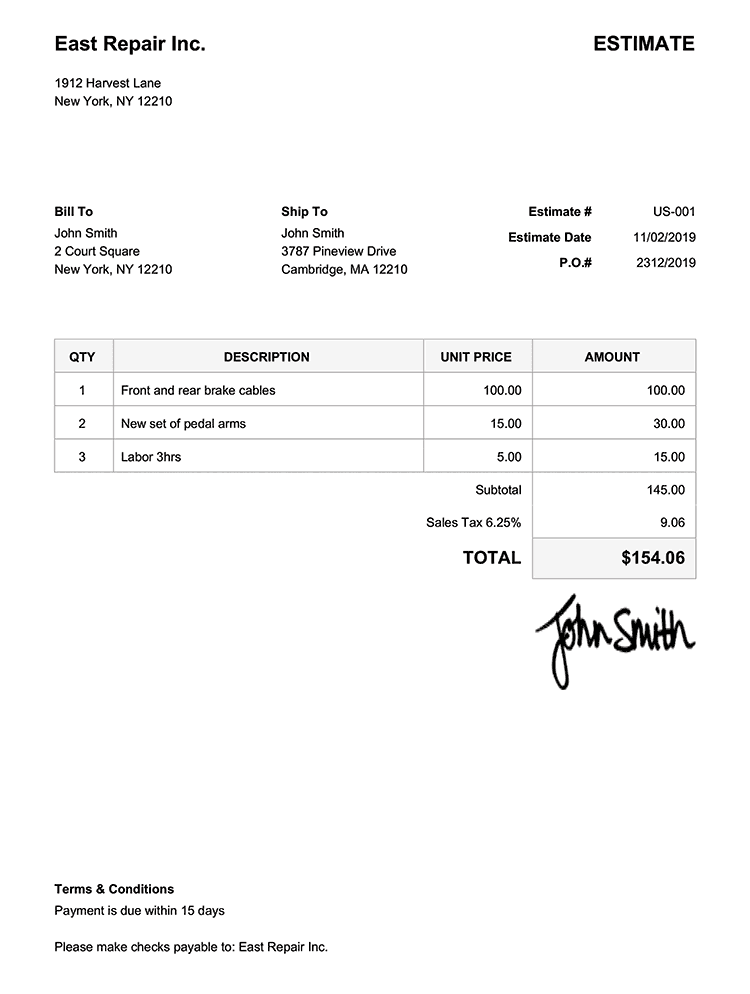
Notice how there is space in the footer to add payment terms and conditions. While this isn’t a requirement for all estimates, it can be helpful for cash flow purposes.
Work estimate template for cleaners
This work estimate template is appropriate for quoting on jobs that span a timeframe longer than one day. For example, this cleaning company might quote for a job that will take multiple days, meaning they can use the start date, end date, and duration fields to provide the necessary information as part of their estimate.
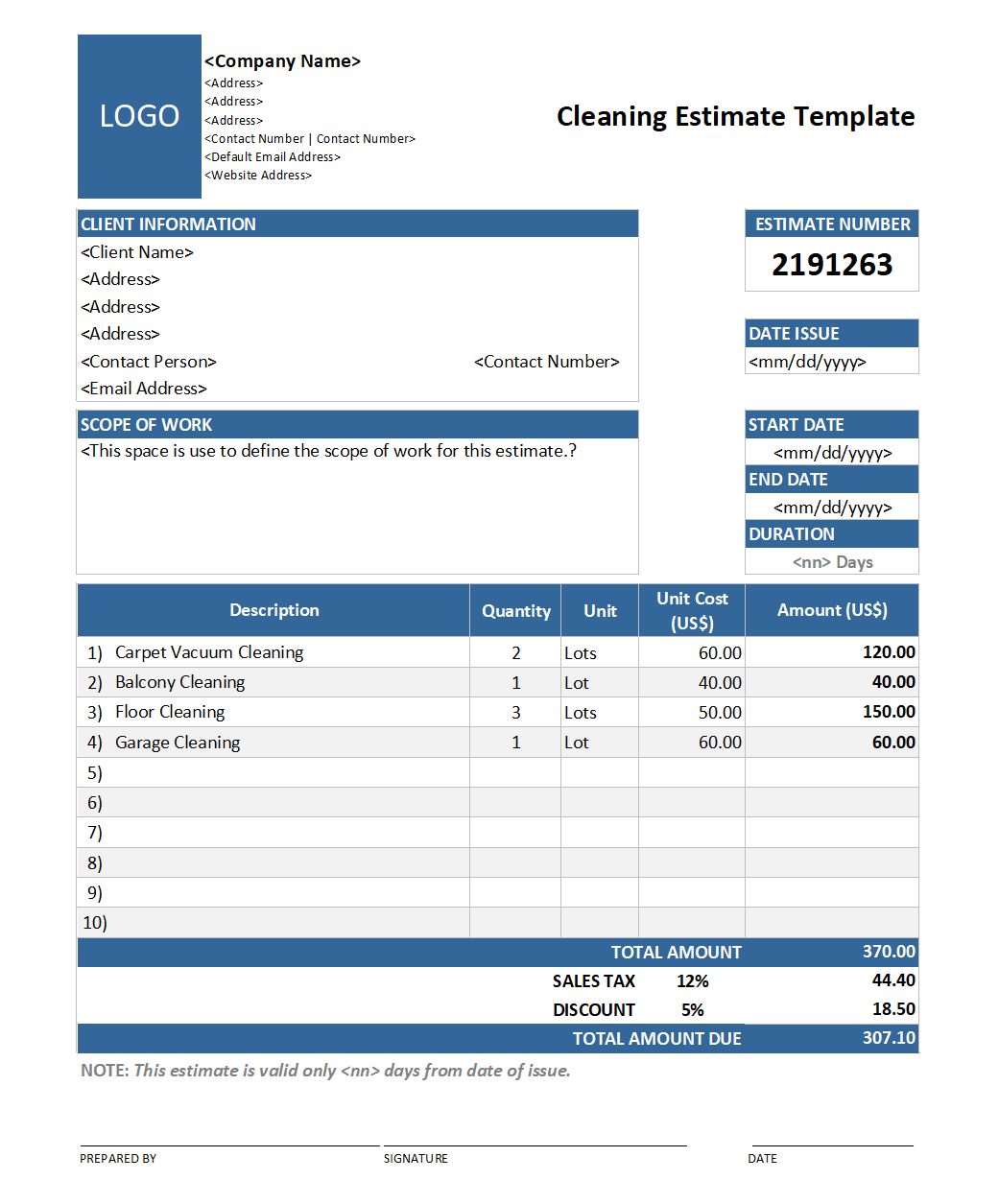
monday.com’s work estimate template
Free estimate templates are most often simply Google Docs or Microsoft Word documents. The problem with both options is any quote lives siloed from the company project management system. That means a lot of extra managerial work when doing the job and billing the customer.
That’s why we decided to create a work estimate template for the monday.com Work OS. With our work estimate template, it’s easy to edit fields, create and share forms digitally with staff, and create dynamic output for specific types of jobs.
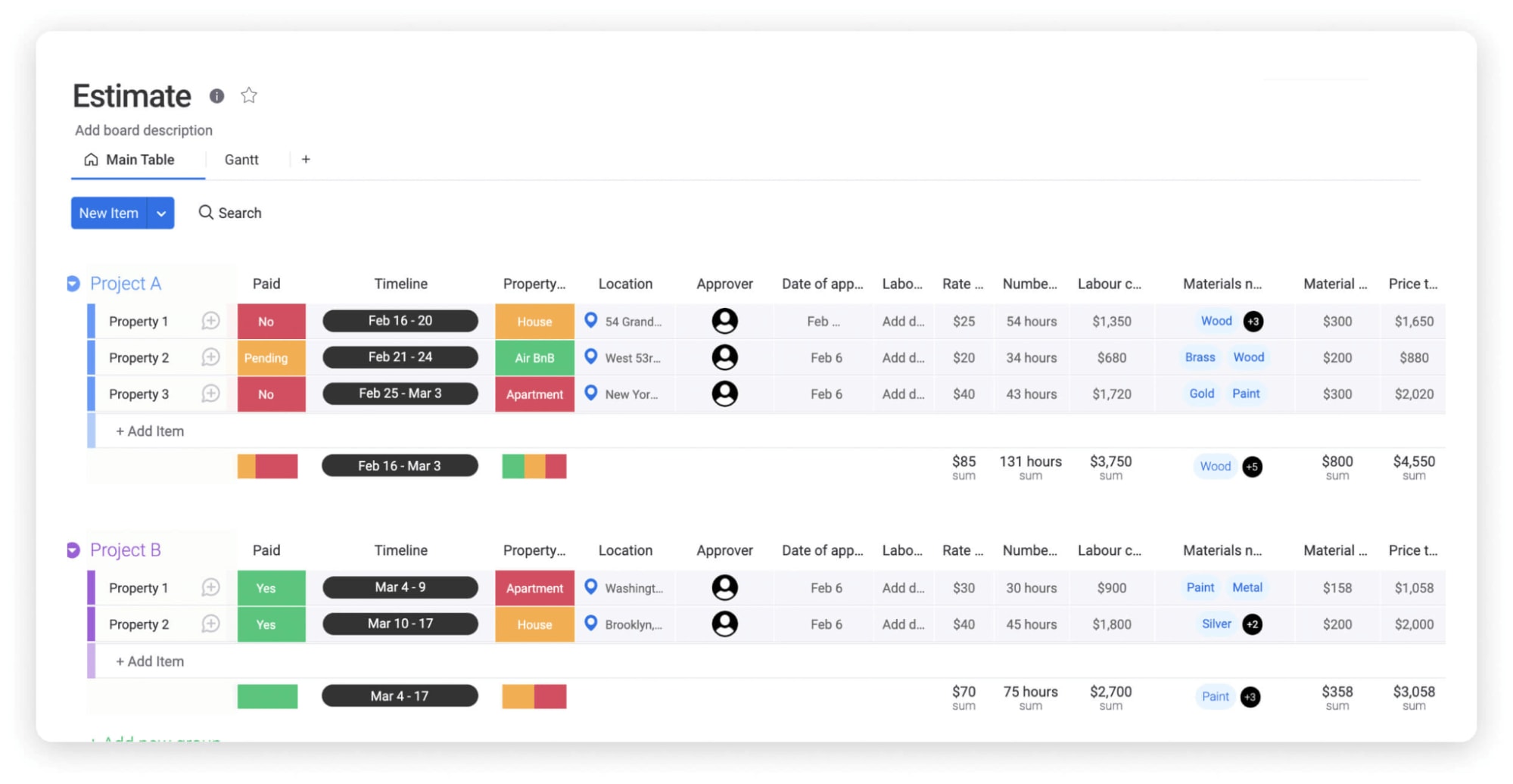
You can also manage the timelines of multiple different projects and their corresponding estimates with the Timeline View.
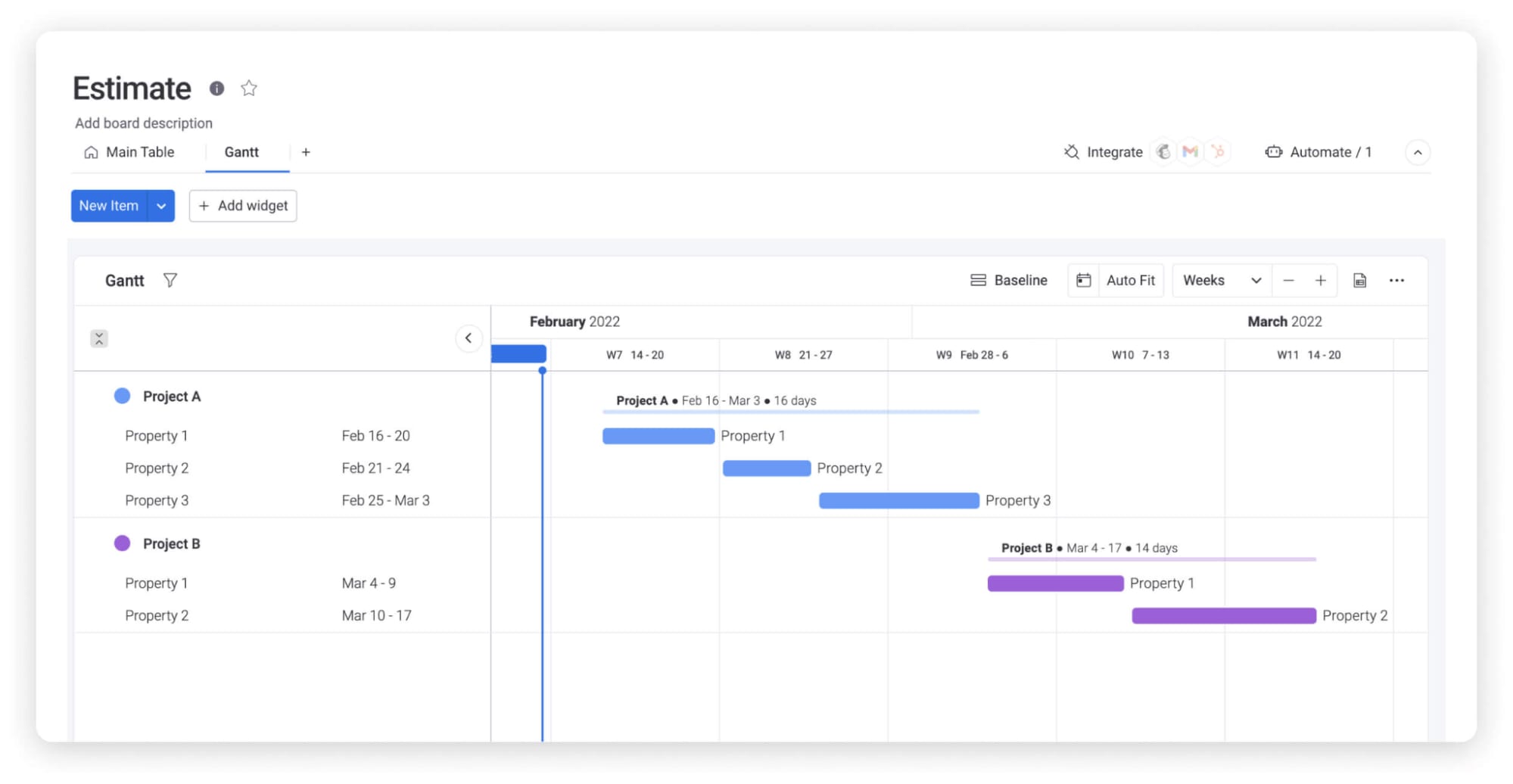
Want to print a physical document? Use monday workdocs, an intuitive, collaborative word editor. Since it lives in the monday.com Work OS, your team can quickly pull data from various monday.com boards.
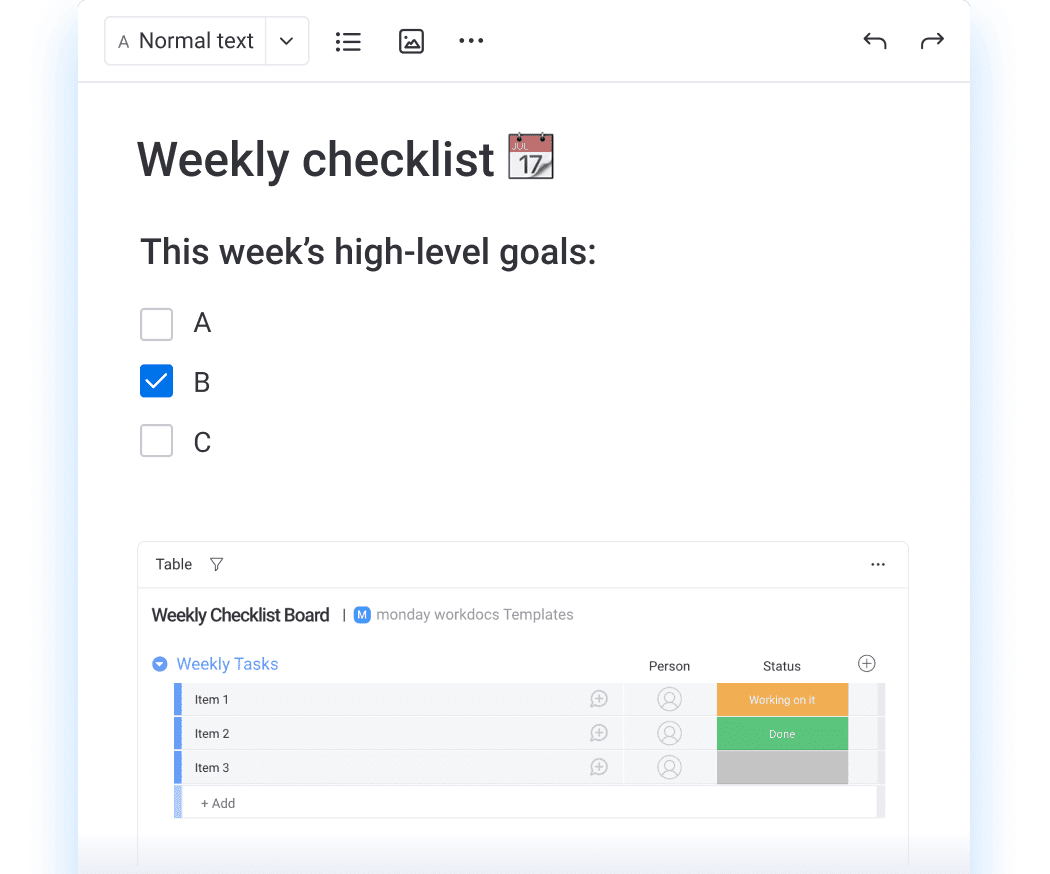
All work estimates can be saved against the customer’s record in the monday.com CRM. Then, when the estimate gets accepted (fingers crossed!), plug the relevant details right into the live project board without doubling up on all that data entry.
Best practices for using a work estimate template
New to using a work estimate template? Here are a few helpful tips to bear in mind before generating that first quote:
- Make sure to create a working copy of the template before editing, so the original template stays intact.
- Always change the quote number on the new estimate and keep quotes in sequential order. Or, better yet, use a platform like monday.com that does this automagically.
- Ensure company details are up-to-date. If anything changes, update the template.
- Include a clause that stipulates all costs are estimates and may be subject to change. For example, material costs may increase before the quote is accepted.
- If there are any special circumstances for a given job, add these to the notes section.
FAQs about work estimate templates
What should a work estimate include?
A work estimate should include the following information:
- company name and contact details
- customer’s name and contact details
- a quote or work estimate number
- the date you created the estimate
- a “valid until” date for the quote, if applicable
- an itemized description of each element of work, as well as the cost associated with each element
- estimated date of completion
- a work estimate total
- any taxes included in the estimate
- payment terms
Simply create a document that includes all of this information, and work estimate … done!.
Does Google Docs have an estimate template?
No, Google Docs does not offer a standard template for creating work estimates. However, you can easily create an in-depth estimate using monday.com’s template.
How do you make a spreadsheet estimate?
In Microsoft Excel, Google Sheets, or another platform, follow these steps:
- Create company name, address, and phone number fields, and add these details.
- Create fields for customers’ names, addresses, and phone numbers, and add these details.
- Add the work estimate number, as well as today’s date.
- Add a description of each aspect of work required and the cost associated with each aspect.
- Use a formula to calculate the estimated total.
Or, you can just use the Google Sheets work estimate template we’ve created!
